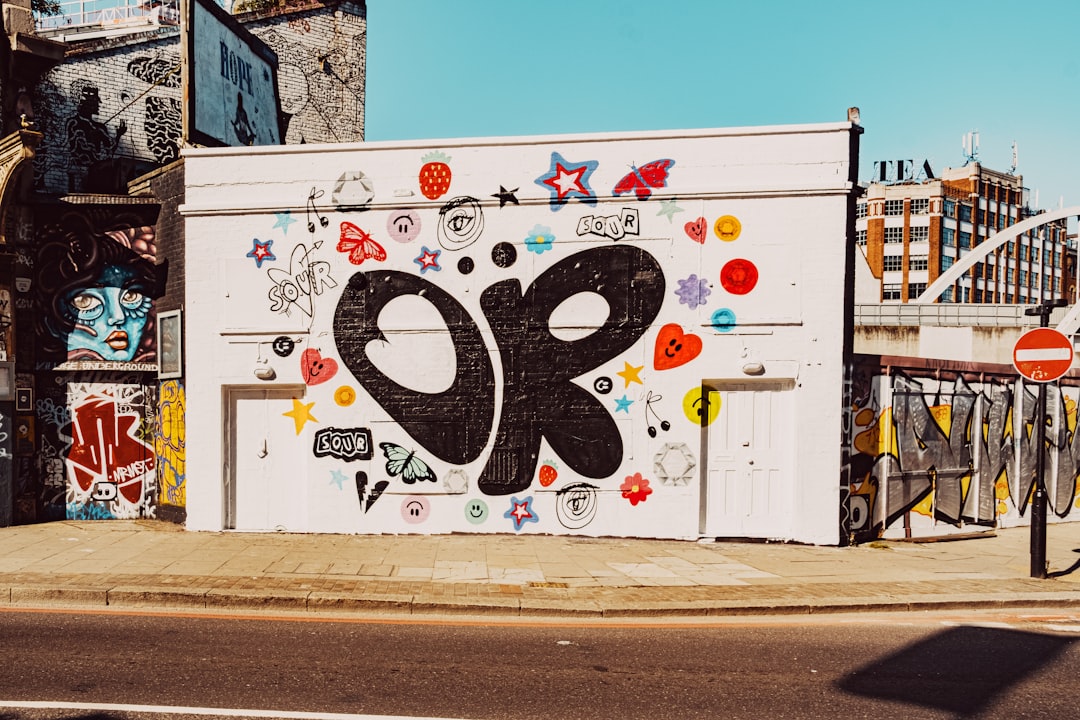

Engage prospects with a scan and streamline customer engagement with FREE QR code marketing tools by Sona – no strings attached!
Create a Free QR CodeFree consultation

No commitment

Engage prospects with a scan and streamline customer engagement with FREE QR code marketing tools by Sona – no strings attached!
Create a Free QR CodeFree consultation

No commitment
Advertising agencies and consultants operate within an increasingly fragmented marketplace where demonstrating ROI is both more critical and more challenging than ever. Despite rapid advances in digital engagement, a persistent frustration remains: physical interactions like direct mail, printed ads, or face-to-face events rarely translate into actionable digital signals. As a result, high-value prospects can slip through the cracks, remaining untracked and ultimately lost as opportunities.
The disconnect between physical and digital has left many agencies with limited visibility into who is engaging and where to focus follow-up. QR code integration is beginning to address this gap, offering a pathway to drive measurable, real-time engagement across every channel. Instead of relying on cumbersome downloads or manual entry, QR codes enable a simple scan to trigger a variety of conversion-focused actions like landing page visits, feedback collection, or CRM enrichment. For agencies and consultants, this means capturing high-intent signals and nurturing unknown prospects who would otherwise remain anonymous. For a broader overview of how this works in practice, see these insights on QR codes for marketing and Sona QR’s primer on QR codes in marketing.
This article explores practical strategies for agencies and consultants to modernize customer journeys and recover missed leads by using QR codes. Discover how seamless, context-driven QR code experiences can fuel integrated marketing efforts with minimal overhead and maximum impact, and browse Sona QR’s use case library for real-world applications.

Agencies often lose momentum when engagement starts offline and fails to carry through to digital systems. A prospect may pocket a brochure, snap a photo of a billboard, or sit through a presentation, yet they never fill out a form or book time with your team. QR codes fix that by turning every physical impression into a direct, trackable action that feeds your funnel and your CRM in real time. The result is less guesswork, faster response times, and clearer attribution from first scan to qualified opportunity.
Replacing analog processes is the fastest path to higher conversion. Swap fishbowl business card drops for QR-enabled badge scans that push contacts straight into your CRM. Replace paper sign-up sheets at workshops with scannable forms that trigger welcome emails and Slack alerts for sales. Retire generic brochures that force prospects to type URLs, and print dynamic QR codes that route to personalized landing pages with a call to action that matches the moment. With Sona QR, you can create, manage, and update these codes centrally, capture scan data instantly, and sync it with tools like HubSpot, Salesforce, and ad platforms for automated follow-up.
Centralized QR management helps teams surface missed engagement signals in real time. Whether a CMO scans a case study at a conference or a founder scans a direct mail postcard, your systems capture the event, enrich the profile, and kick off a next-best action. Start creating QR codes for free.

Agencies invest heavily in offline touchpoints that rarely yield reliable, attributable data. Conference brochures, creative mailers, and in-person workshops often leave you guessing about who engaged and what they want next. QR codes close this visibility gap. With a single scan, a prospect self-identifies intent, lands on a tailored digital experience, and enters your attribution model with full context. For additional tactics, see this step-by-step guide to incorporating QR in your digital marketing strategy.
Beyond clarity, QR codes reduce friction for the scanner and the marketer. There is no app to download, no URL to type, and no form to hunt for. The code delivers exactly what the prospect wants at that moment: a quick video demo, a benchmark report, a calendar booking page, or a case study. For agencies, that simplicity translates into higher conversion rates, smoother handoffs, and measurable ROI across materials like case study booklets, sales leave-behinds, window clings, trade show signage, and magazine ads.
By placing QR codes on appointment cards, direct mail, in-store displays, and out-of-home ads, agencies finally connect previously siloed moments to business outcomes. You know which assets moved someone from browsing to booking, and you can replicate success with confidence.

Choosing the right QR format for each task minimizes friction and maximizes conversion. Agencies should match the scanner’s context to the action they want to trigger, then select the QR type that accomplishes it seamlessly. When managed centrally with Sona QR, formats can be mixed and updated as campaigns evolve.
For new business development, vCards and calendar links shine at events where speed matters. For lead nurturing, web links to gated content or video micro-sites make it easy to deliver value and capture data. For client experience, feedback and support forms keep satisfaction high and service workflows tight.
Dynamic QR codes are recommended for most campaigns, since they allow flexible routing, content updates, and robust analytics. Static codes are best reserved for evergreen content where tracking and editing are less critical. Learn how these capabilities come together in the product overview.

Growth hides in the gaps between offline touchpoints and your digital funnel. Agencies and consultants can uncover high-intent prospects by placing QR codes wherever curiosity peaks: at the moment someone is ready to learn more, compare options, or reach out. Thoughtful placement turns passive interest into immediate action while giving your team the context needed for fast, relevant follow-up.
Start by auditing your physical footprint and recurring client interactions. Map where prospects and clients handle printed materials, where time is tight, and where decision-making accelerates. Then position QR codes with clear, benefit-driven calls to action. The difference is striking: scans replace guesswork with data, and one scan can route someone to the exact next step you want them to take.
This approach transforms every asset into a gateway for audience enrichment. Instead of losing momentum after a meeting or a mailer, each scan advances the journey and lights up your CRM with context-rich engagement data.
Well-placed QR codes attack the root causes of leakage in agency pipelines: anonymous offline interest, slow manual capture, and inconsistent follow-up. Implement a short list of high-impact use cases first, then expand once workflows and attribution are dialed in.
In most agency environments, the top wins concentrate around new client acquisition, service engagement, and feedback collection. Each can be instrumented with QR codes that accelerate conversion and deepen insight.
Ultimately, these applications improve attribution, reduce operational drag, and increase retention. Every scan is both a conversion opportunity and a data point that sharpens your understanding of who is leaning in and why. For high-quality asset prep, review professional QR code production considerations.
Each QR scan carries rich context: what asset drove the scan, where it occurred, and what happened next. By assigning unique codes across your touchpoints, you can segment audiences automatically and use those signals to run precise retargeting and tailored follow-up. This turns formerly anonymous interactions into predictable, orchestrated journeys.
For agencies, segmentation often breaks down by role, industry, and lifecycle stage. A media buyer who scans a measurement guide has different intent than a founder who scans a pricing sheet. Sona QR lets you tag these differences at the source, then pass them to your CRM and ad platforms for segment-specific messaging. For a deeper strategy on leveraging behavioral signals, read Sona’s blog post titled The Essential Guide to Intent Data.
For advertising agencies and consultants, valuable distinctions include prospective clients vs. current clients, procurement vs. marketing leadership, and creative decision-makers vs. analytics stakeholders. Segmenting by these roles ensures every follow-up feels specific and timely.
QR codes connect physical and digital channels into a single performance system. When each print ad, mailer, or event asset routes to a measurable destination, your reports stop guessing and your optimization accelerates. Scans become the connective tissue that unify awareness, consideration, and conversion activity across campaigns.
The key is to plan QR placements alongside your media plan, not as an afterthought. Align the CTA and destination with the creative concept, and keep the experience short and valuable. Then centralize monitoring with a platform like Sona QR so you can compare performance across channels and assets. Tie in placements across digital signage, TV, and print to create consistent, trackable journeys.
QR codes serve as the offline onramp to your digital marketing engine. With Sona QR, you can manage your codes centrally, monitor performance live, and push scan data into your CRM and ad platforms so your campaigns adapt while they run.
Launching a QR-powered campaign is straightforward when you follow a clear process. Start by clarifying what action you want the scanner to take, then select the code type, design for the environment, and ensure tracking is in place. This reduces friction for prospects and gives your team the data needed to iterate quickly.
Below is a practical checklist for agencies and consultants. Use it to standardize QR deployments across teams, vendors, and clients so each asset contributes to a coherent, measurable funnel.
A disciplined checklist transforms QR from a novelty into an engine for reliable acquisition and retention. With Sona QR, you can standardize templates, enforce tagging conventions, and automate downstream actions so campaigns scale without chaos.
The biggest hurdle in proving offline ROI is connecting early engagements to revenue. QR codes linked to robust analytics and CRM workflows solve this end-to-end. They record every scan, enrich contacts, and attribute outcomes like meetings booked, opportunities created, and deals won to the assets that sparked them.
Tracking goes beyond simple scan counts. When you attach campaign IDs, UTMs, and asset tags, you know exactly which placements and messages drive movement. Sona QR captures the scan context, while Sona is an AI-powered marketing platform that turns first-party data into revenue through automated attribution, data activation, and workflow orchestration. Explore models in Sona’s blog post single vs multi-touch attribution models to measure blended impact across touchpoints.
End-to-end monitoring enables data-driven decisions and faster optimization. You will know which offline assets to replicate, which offers to rotate, and where to double down to improve ROI quarter after quarter.
Scaling QR success requires a repeatable set of practices that align with your media mix and sales process. Focus on clarity of the promise, reliability of the scan, and speed of follow-up. The right habits increase scan rates, lift conversions, and reduce operational friction.
Agencies should also embrace creative placements that delight audiences while capturing real signals. The goal is to make QR codes feel useful, not gimmicky, so prospects happily trade a scan for immediate value. See additional use cases and benefits in this overview of the use of QR codes in marketing.
Creative deployment examples for agencies include adding QR codes to client invoices to route to a post-campaign health survey, and printing QR codes on workshop name tents that link to the deck, exercises, and a booking link for a follow-up clinic. Both examples turn routine moments into measurable next steps.

Real-world deployments show how QR codes transform anonymous interest into trackable, revenue-connected outcomes. The most successful examples pair a strong promise with a short, value-rich destination and automatic follow-up.
Use the inspiration below to design your next campaign. Adapt the CTA, placement, and destination to your audience and environment, then measure aggressively so you can scale the winners quickly.
These examples illustrate how QR-powered campaigns turn everyday touchpoints into powerful acquisition and retention levers. The common thread is a strong CTA, a concise destination, and a workflow that moves quickly from scan to personal follow-up. For more end-to-end planning guidance, review how agencies weave QR into broader digital marketing strategy.
QR codes have revolutionized advertising agencies and consultants by transforming traditional campaigns into dynamic, measurable growth engines. They enable agencies to acquire new clients more effectively, deliver personalized customer experiences, and generate actionable insights from every interaction. Imagine having the power to pinpoint exactly which ads and materials are driving conversions—and optimizing your strategy in real time to maximize ROI.
With Sona QR, you gain access to dynamic, trackable QR codes that update instantly without the need for reprinting. This means you can connect every scan directly to campaign performance, retarget high-potential leads, and prove the true impact of your advertising efforts. No more guesswork—just smarter, data-driven decisions that boost your agency’s success.
Start for free with Sona QR today and turn every QR code scan into a valuable customer connection and revenue opportunity.
Advertising agencies can use QR codes to turn physical impressions into direct, trackable actions that feed their funnels and CRM in real time, enabling faster response times, clearer attribution, and higher conversion rates across channels like events, direct mail, and print ads.
Incorporating QR codes reduces friction for scanners, provides offline to online continuity, allows dynamic content updates, enables precise trackability and attribution, and offers cost efficiency at scale, all contributing to measurable ROI and smoother marketing workflows.
QR codes enable immediate feedback collection by linking to surveys or forms placed on workshop slides, onboarding documents, and project closeouts, which reduces survey lag and highlights client satisfaction or upsell opportunities in real time.
Agencies can creatively place QR codes on event badges, direct mail packages, print ads, trade show signage, and workshop materials to deliver personalized content, book meetings, collect feedback, and route prospects to relevant digital experiences that match their intent and context.
QR codes contribute to ROI by capturing actionable engagement data from offline touchpoints, automating CRM enrichment and follow-up, enabling precise attribution of pipeline and revenue to specific assets, and allowing real-time optimization based on performance metrics.
Use Sona QR's trackable codes to improve customer acquisition and engagement today.
Create Your FREE Trackable QR Code in SecondsJoin results-focused teams combining Sona Platform automation with advanced Google Ads strategies to scale lead generation

Connect your existing CRM

Free Account Enrichment

No setup fees
No commitment required

Free consultation

Get a custom Google Ads roadmap for your business






Launch campaigns that generate qualified leads in 30 days or less.
